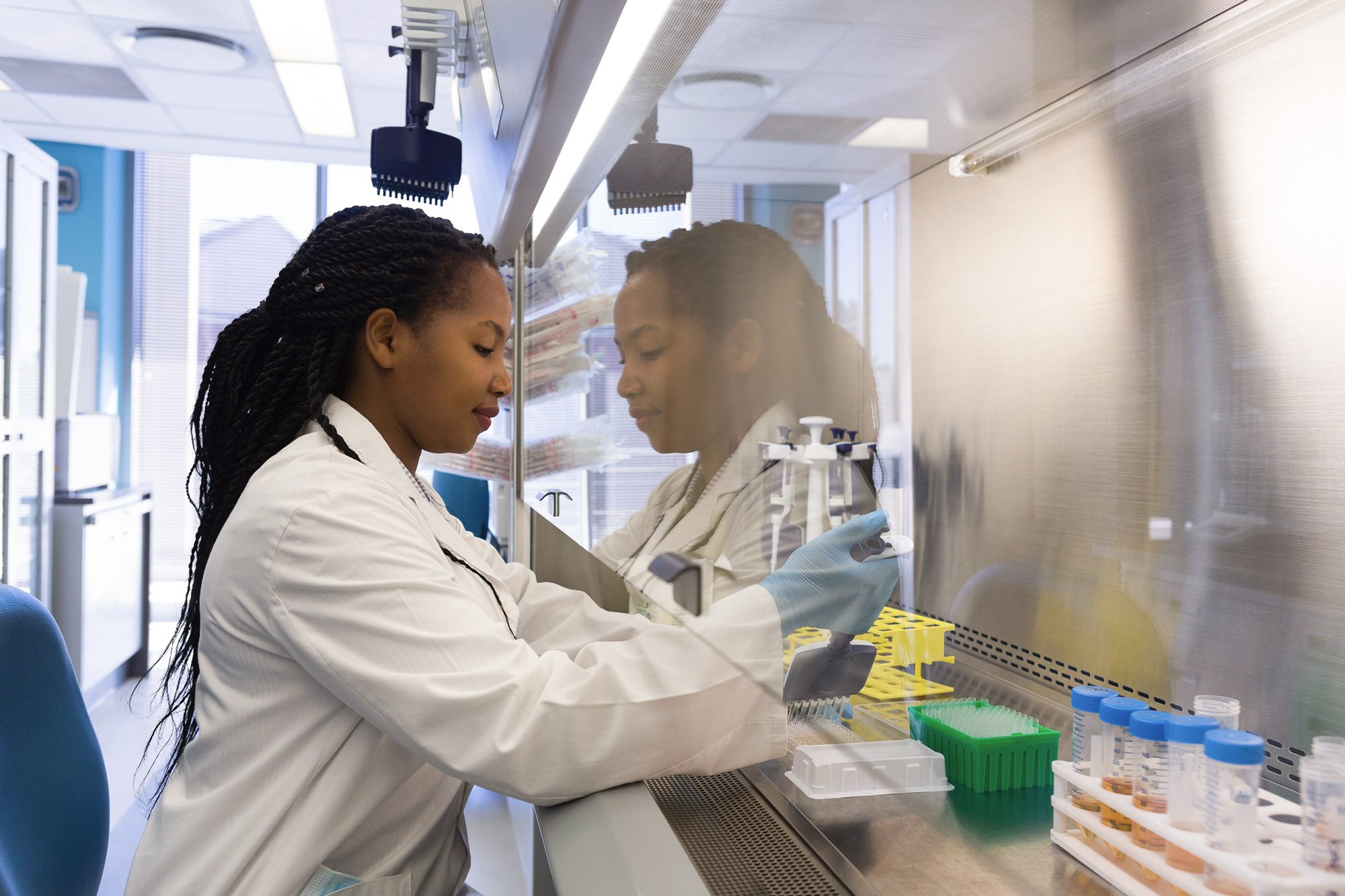Mapping the secretome of animal myoblasts, adipocytes, and other cells used in cultivated meat
Stem cells secrete a variety of signaling factors that can influence the behavior of surrounding cells, known as paracrine signals. In high-density bioprocesses, these secreted factors can accumulate to concentrations that can dramatically influence productivity and behavior of neighboring cells. By mapping the secretome of animal myoblasts, adipocytes, and other stem cells used for cultivated meat, a better understanding of which factors influence proliferation, differentiation, and other cellular traits can be obtained. Mapping efforts will inform how to best leverage this knowledge to improve cultivated meat production.
-
Cultivated
- Research
- R&D
- Production
- Cell line development
- Academics
Current challenge
The addition of a select set of exogenously added growth factors to cell culture media stimulates growth and proliferation. However, these effects can be inhibited or assisted by other secreted factors from stem cells, including soluble secreted factors (e.g. cytokines and growth factors) and extracellular vesicles such as exosomes and microvesicles. To add to the complexity, secreted extracellular vesicles can harbor peptides, proteins, and small RNA species that can all influence cell behavior.
Optimization of large-scale animal bioprocesses can be greatly enhanced if inhibitory factors are identified and selectively removed or reduced, while proliferative factors are retained or recycled. Furthermore, a deeper understanding of paracrine signals can potentially facilitate cost reduction of the cell culture media. Mapping the secretomes of different animal stem cell types used in cultivated meat is the first step in informing future bioprocessing and media optimization efforts.
Proposed solution
The cultivated meat field would benefit from comprehensive, standardized characterization of secreted cellular components for cells of a number of cultivated meat-relevant species and cell types grown under environmental conditions similar to those used in industrial production. The secretomes from a variety of human stem cell populations have been analyzed previously, providing protocols for collecting secreted factors and characterization via mass spectrometry, gene chips, and sequencing analyses.
Cultivated meat researchers can leverage these methods for collecting data on the secretomes of myoblasts, adipocytes, and other stem cell types relevant to cultivated meat. These data could inform bioprocessing strategies, medium recycling approaches, selection of growth factors to manufacture recombinantly, and co-culture studies. These data should be provided in open-access publication and, ideally, additionally housed within an online database. This tool can serve as a centralized resource to collate subsequent data from other researchers expanding the numbers of species, cell types, and growth conditions for which the secretome has been analyzed. This will facilitate cross-comparisons to elucidate mechanistic insights for a deeper understanding of generalized principles governing cell signaling.
Anticipated impact
Little work has been published to date on the secreted factors from stem cells derived from the species used in cultivated meat. Empirical mapping of the secretome is important as unique factors likely exist for each species and cell type. Now that a growing number of publicly-accessible cultivated meat-relevant cell lines are becoming available to researchers, such secretome mapping efforts are finally feasible. These data can identify unique growth factors, cytokines, and nucleic acid species that assist the growth, proliferation, differentiation, and maturation of cells. The data can also inform medium recycling and feeding strategies that reduce the build up of inhibitory factors in the cell culture media (see Csaszar et al. 2012). A comprehensive secretome map can play a part in addressing the largest challenges in commercializing cultivated meat: lowering costs and scaling up. This effort will be most effective if results are publicly available rather than siloed in for-profit companies.
Related efforts
- A rich set of literature exists on mapping the secretome of human mesenchymal stem cell populations that can serve as a guide for future research efforts (one example, Mitchell et al. 2019).
- Computational predictions for reducing accumulation of inhibitory paracrine factors can greatly improve stem cell expansion (Csaszar et al. 2012).
GFI resources

The science of cultivated meat
Learn about the science of cultivated meat and the challenges that must be addressed for commercial production.

Research funding database
GFI’s research funding database provides curated grant opportunities for open-access alternative protein research.

Find collaborators
Join the GFIdeas global community of 2,000+ entrepreneurs, scientists, investors, and subject matter experts. Discuss projects on the members-only Slack community, attend monthly seminars, and use the community directory to help you find collaborators working on similar Solutions!
Related solutions
-
Cultivated
-
Fermentation
Growth factors from conditioned cell culture media
Rather than relying on recombinant growth factors, cultivated meat companies could use conditioned media from animal cells producing high levels of these molecules.
-
Cultivated
Improving efficiency and assessment of adaptation to suspension growth
Improving methods for adapting cells to suspension culture can facilitate cell line development and bioprocess design for cultivated meat.
-
Cultivated
Species-specific research toolkits for cultivated meat-relevant species
Coordinated efforts to develop standardized, comprehensive research toolkits of meat-relevant species would exponentially accelerate cultivated meat research.

Explore the full solutions database
Browse 300+ startup ideas, commercial opportunities, research projects, and investment priorities throughout the alternative protein supply chain.
Related GFI research grants

Developing marbled cultivated beef
GFI is developing marbled cultivated beef with Dr. Amy Rowat at University of California, Los Angeles

Cellular building blocks
Learn about Dr. Marcelle Machluf’s work designing cellular building blocks for cultivated meat with at Technion – Israel Institute of Technology.

Computational modeling
GFI grantee Dr. Simon Kahan at the Cultivated Meat Modeling Consortium is using computational modeling to improve bioreactor design for meat cultivation.

Designing cost-effective bioreactors
Learn about Dr. Marianne Ellis’s work at University of Bath to reduce the cost of bioreactors for cultivated meat production.
Get involved
If you’d like to fund a research project, work on any of these solutions, share information about related efforts that are already underway, or elevate new ideas for advancing the alternative protein industry, we’d love to hear from you!
